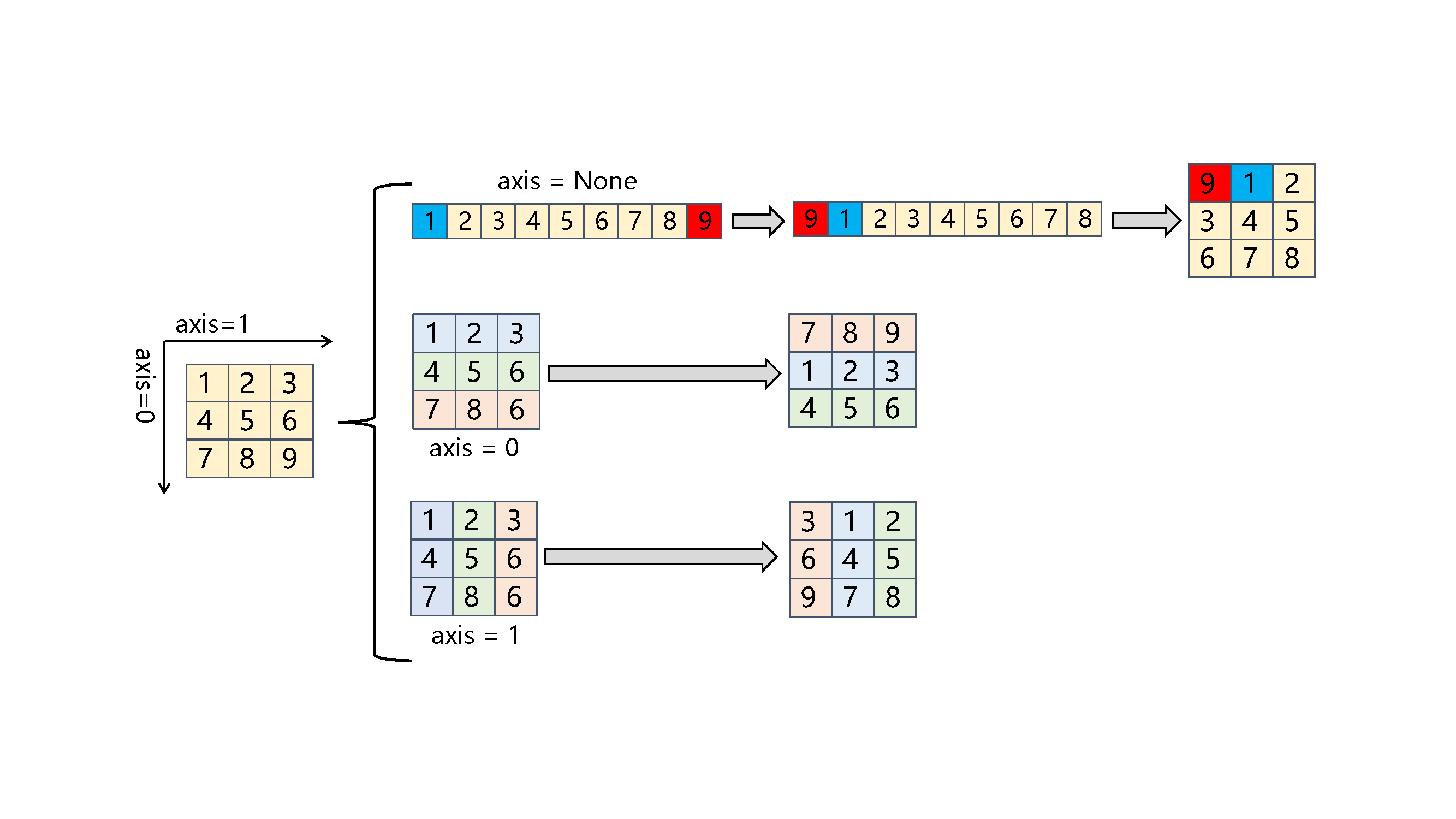roll
- paddle. roll ( x: Tensor, shifts: int | Sequence[int], axis: int | Sequence[int] | None = None, name: str | None = None ) Tensor [source]
-
Roll the x tensor along the given axis(axes). With specific ‘shifts’, Elements that roll beyond the last position are re-introduced at the first according to ‘shifts’. If a axis is not specified, the tensor will be flattened before rolling and then restored to the original shape.
- Parameters
-
x (Tensor) – The x tensor as input.
shifts (int|list|tuple) – The number of places by which the elements of the x tensor are shifted.
axis (int|list|tuple, optional) – axis(axes) along which to roll. Default: None
name (str|None, optional) – The default value is None. Normally there is no need for user to set this property. For more information, please refer to Name .
The image below shows a 2D tensor [[1,2,3],[4,5,6],[7,8,9]] being transformed into tensors with different shapes through the roll operation.

- Returns
-
Tensor, A Tensor with same data type as x.
Examples
>>> import paddle >>> x = paddle.to_tensor([[1.0, 2.0, 3.0], ... [4.0, 5.0, 6.0], ... [7.0, 8.0, 9.0]]) >>> out_z1 = paddle.roll(x, shifts=1) >>> print(out_z1.numpy()) [[9. 1. 2.] [3. 4. 5.] [6. 7. 8.]] >>> out_z2 = paddle.roll(x, shifts=1, axis=0) >>> print(out_z2.numpy()) [[7. 8. 9.] [1. 2. 3.] [4. 5. 6.]] >>> out_z3 = paddle.roll(x, shifts=1, axis=1) >>> print(out_z3.numpy()) [[3. 1. 2.] [6. 4. 5.] [9. 7. 8.]]

